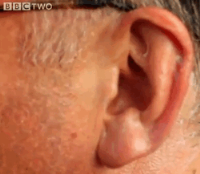Ok, so youre biased having the HAT that sounds worst regarding to changer.I just so happen to have a Hifiberry Digi+ I/O, the one with only one 27 MHz oscillator (oh no, the horror!) and no isolation transformer.
I made some quick measurements of it at 88.2 kHz and 96 kHz sample rates using the optical input of a MOTU Ultralite Mk5, looks text book perfect to me for 24 bit data. Tests were done with the REW signal generator on the Pi with the MOTU connected to Mac mini running another instance of REW as REW in Linux would not recognize any inputs beyond the first 2 (TOSLINK is input 13/14).
When I have some free time tomorrow I can run some measurements of the DAC output with a Cosmos ADC to see if there is any difference between USB input and TOSLINK from the Digi+ I/O.
88.2 kHz, 1 kHz tone, 0 dBFS, -145 dB THD+N
View attachment 189849
88.2 kHz, J Test
View attachment 189850
96 kHz, 1 kHz tone, 0 dBFS, -145 dB THD+N
View attachment 189851
96 kHz, J TestView attachment 189852
Maybe the DAC output tests will show something different but this is about as excellent as it can be from a digital transport standpoint.
Michael
Interesting nevertheless - but I would personally never use a digital transport with a compromised , single clock if using spdif. This clock is gonna be optimized for 44,1 or 48 kHz sampling frequency, not both.
This is my experience after listening ( and having ) a bunch of digital transports thru the years.
The extra cost for the HAT with two crystals is small. Why do you think the ingeneers at hifiberry have two better clocks in the more expensive card , one for each sampling frequency ? Because there is no difference in sound quality ?
The 27 mhz clock used in digi+ seems to be optimized for 48 kHz, which is fine if youre watching tv or movies.
Read more here :

Single clock 27 MHZ oscillator in MPEG-2 system - MyScienceWor...
Single clock 27 MHZ oscillator in MPEG-2 system: This invention provides a method of generating multiple frequencies for use in a digital data transmission system inc
Last edited:


